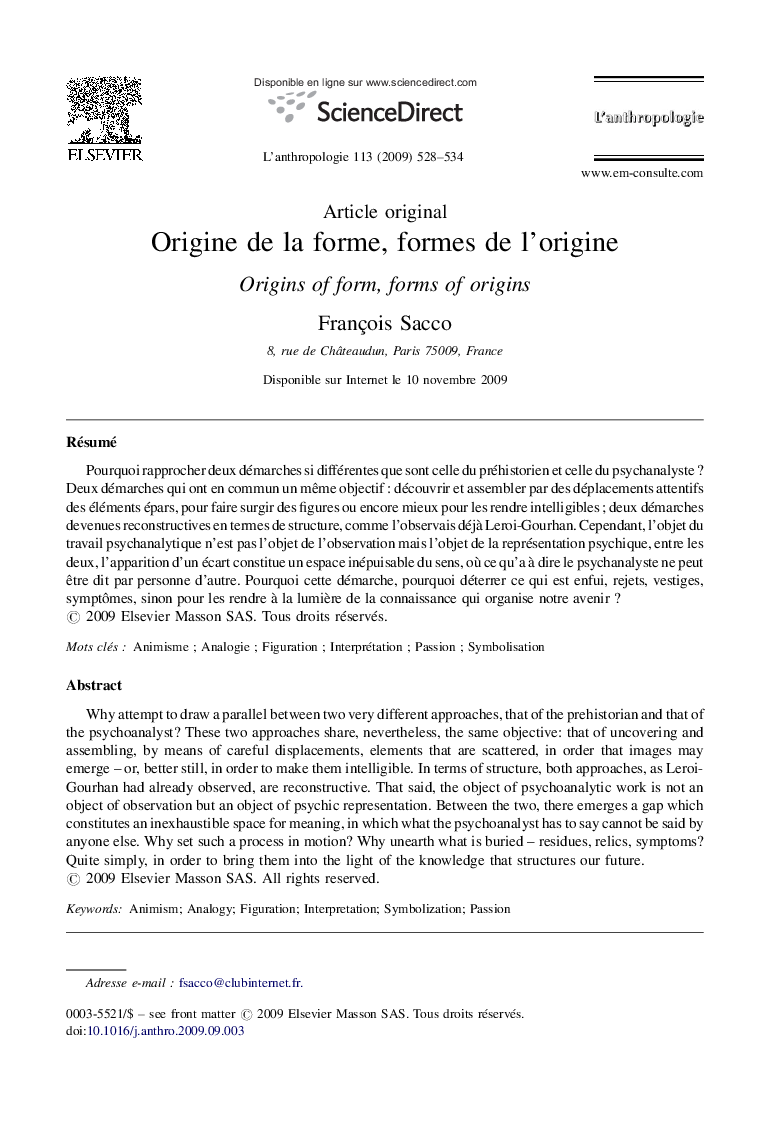| Article ID | Journal | Published Year | Pages | File Type |
|---|---|---|---|---|
| 1033774 | L'Anthropologie | 2009 | 7 Pages |
RésuméPourquoi rapprocher deux démarches si différentes que sont celle du préhistorien et celle du psychanalyste ? Deux démarches qui ont en commun un même objectif : découvrir et assembler par des déplacements attentifs des éléments épars, pour faire surgir des figures ou encore mieux pour les rendre intelligibles ; deux démarches devenues reconstructives en termes de structure, comme l’observais déjà Leroi-Gourhan. Cependant, l’objet du travail psychanalytique n’est pas l’objet de l’observation mais l’objet de la représentation psychique, entre les deux, l’apparition d’un écart constitue un espace inépuisable du sens, où ce qu’a à dire le psychanalyste ne peut être dit par personne d’autre. Pourquoi cette démarche, pourquoi déterrer ce qui est enfui, rejets, vestiges, symptômes, sinon pour les rendre à la lumière de la connaissance qui organise notre avenir ?
Why attempt to draw a parallel between two very different approaches, that of the prehistorian and that of the psychoanalyst? These two approaches share, nevertheless, the same objective: that of uncovering and assembling, by means of careful displacements, elements that are scattered, in order that images may emerge – or, better still, in order to make them intelligible. In terms of structure, both approaches, as Leroi-Gourhan had already observed, are reconstructive. That said, the object of psychoanalytic work is not an object of observation but an object of psychic representation. Between the two, there emerges a gap which constitutes an inexhaustible space for meaning, in which what the psychoanalyst has to say cannot be said by anyone else. Why set such a process in motion? Why unearth what is buried – residues, relics, symptoms? Quite simply, in order to bring them into the light of the knowledge that structures our future.
